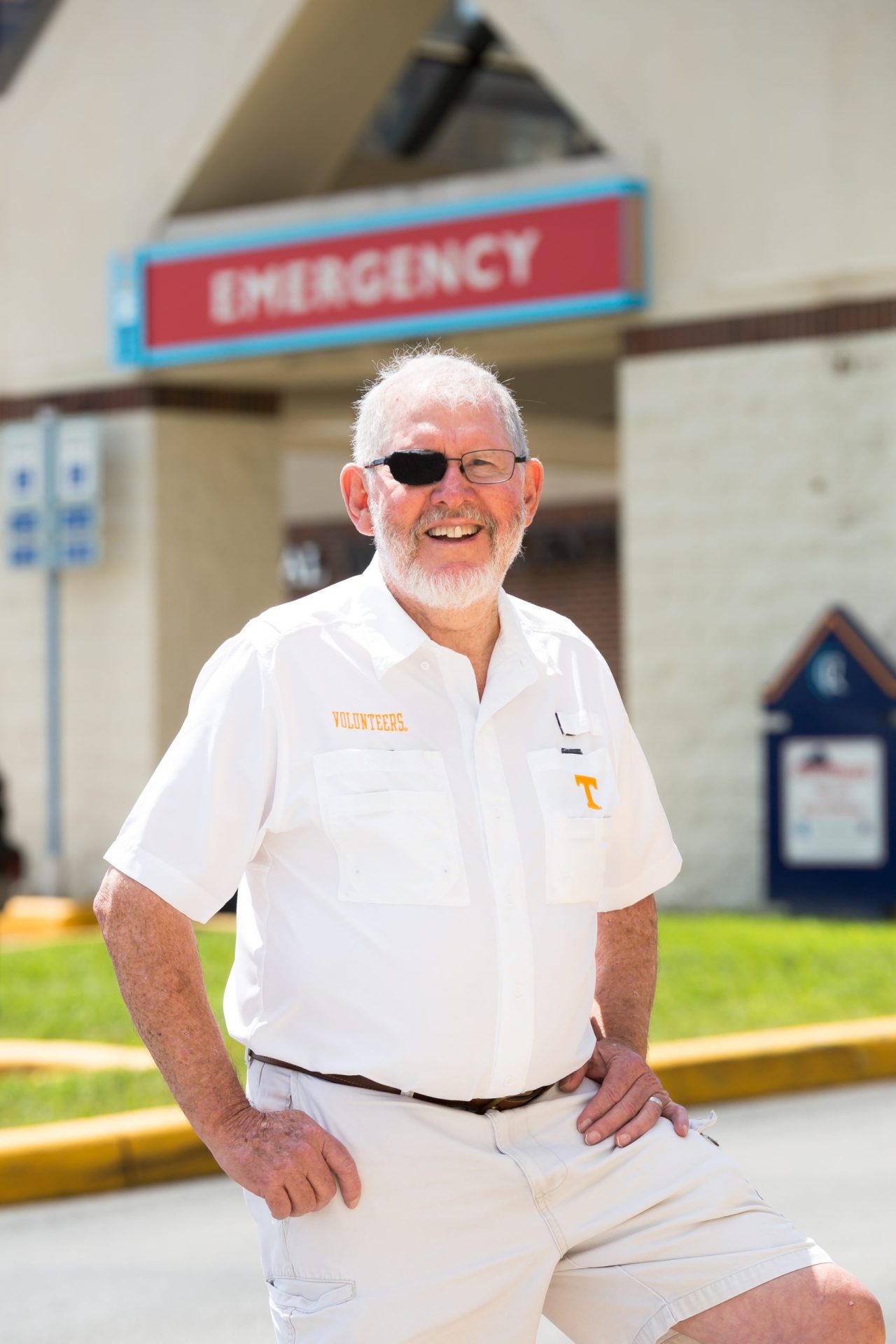Take Control of Risk Factors to Prevent
March 03, 2024

Cookeville Regional Medical Center (CRMC) received the accreditation as a Chest Pain Center with Primary PCI (percutaneous coronary intervention, commonly known as coronary angioplasty) from the American College of Cardiology (ACC).
This accreditation is a testament to CRMC’s exceptional heart attack care, driven in large part by its Code STEMI program that several Tennessee Heart cardiologists helped begin. Code STEMI is a system of protocols designed to achieve minimal door-to-balloon times — the time from arrival at the hospital to heart artery intervention — ultimately saving lives.
One patient, James Moss, had a life-saving experience with this program, showcasing CRMC’s commitment to providing timely and effective care.
When Moss, a 73-year-old Sparta resident, had his heart attack on Jan. 6, the initial symptoms were subtle—a mild pain that seemed to shift from his collarbone to his shoulder.
“It wasn’t a strong pain. It was just a light pain, and it would move,” said Moss. “I had no idea I was having a heart attack.”
Moss thought the discomfort was related to a recent rotator cuff surgery and his visit to the chiropractor the day before, so he called the chiropractor for another adjustment to help with the pain. And even after experiencing dry heaving, Moss didn’t immediately recognize the seriousness of his condition.
“I thought, ‘That’s unusual. I don’t usually do that,’” he said. “Then I got up, got ready and went to the chiropractor.”
When the treatment didn’t alleviate his discomfort, Moss’s chiropractor became concerned and sent him to the emergency room in Sparta. His heart attack diagnosis was confirmed there, and he was quickly transported by ambulance to Cookeville Regional Medical Center.
EMS workers dispatched Moss’s EKG and vitals to CRMC en route, and Dr. Stacy Brewington, a cardiologist with Tennessee Heart, and the hospital’s heart team were ready to treat him the moment he arrived.
“When the ambulance backed up to the emergency room door, just as soon as it stopped, both of those doors flew open, and Dr. Brewington was there wearing a big, white coat that sort of looked like a cape coming through — he was Super Doctor!” said Moss.
Within minutes, Moss was on his way to the cardiac catheterization (cath) lab for treatment. He was found to have a 100% blockage in one artery, which received a stent, and a 60% blockage in another, which Moss is now treating with medication.
“We know that with the heart, time is muscle,” said Dr. Brewington. “The faster a heart artery is opened, the better chance of a good outcome, a stronger heart and longer survival.”
The Code STEMI program was developed to achieve that goal through seamless coordination with EMS teams, rapid-response protocols and advanced technology that sends emails and text notifications with real-time EKG readings to all of the interventional cardiologists and cath lab team from the ambulance.
“People who are coming in by ambulance, we already know that they are Code STEMI (having a heart attack),” said Thomas Reed, CRMC’s data coordinator and EMS liaison. “Their EKG shows ST elevation, so as soon as they hit the door, our heart team shows up, and generally within 20 to 25 minutes, that artery is open.”
Because of this continuing drive to deliver the fastest intervention possible, CRMC has steadily decreased its door-to-balloon times in the nearly 20 years since it started the Code STEMI program.
“The standard is 90 minutes, and the nationwide average is 62 minutes,” said Mitchell Stonecipher, director of the CRMC cardiac cath lab. “We’re now averaging right at 40 minutes, which puts us in the top 10 percent in the country.”
“We’re constantly benchmarked around every other heart attack center in the country, and we’re constantly looking at those and trying to be better,” said Key. “So, there’s not a day that goes by, as fantastic as this service is, that we’re not trying to decrease that 40 minutes by a little bit more.”
It was this dedication that stopped Moss’s heart attack 36 minutes from the time he arrived at CRMC, and now he’s back to enjoying his life.
“I was here for four days, and I received absolutely great care the whole time,” said Moss. “I was just really amazed at the job they did.”
March 03, 2024
February 02, 2024
February 02, 2024
December 12, 2023